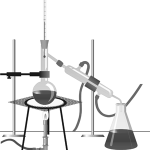Using controlled nuclear fusion for a source of virtually unlimited power that is pollution-free has been a dream of physicists since Einstein. Though it is still a long way off, a new breakthrough has occurred where researchers actually saw a net gain in energy following a fusion reaction. The announcement comes from the National Ignition Facility (NIF) at Lawrence Livermore National Laboratory and was published in Nature.
Nuclear fusion happens naturally in the cores of stars. As atoms from lighter elements smash into one another, the nuclei fuse to create a heavier element and energy is released. If this happens in large enough quantities it starts a process called 'ignition' which is a chain reaction of more atoms fusing and releasing more energy until there is a self-sustaining energy source. If this could be done in a controlled setting using a relatively small amount of water it would represent a limitless power supply. Not only that, but the minimal waste that is produced in the reactions is not radioactive (unlike nuclear fission, which produces about a baseball size of nuclear waste per year).
The step toward the reality of nuclear fusion came within the last few months of research when reactions actually produced more energy than it took to start it, albeit on a very small scale. The paper published reported results of 1.7 times more energy released from the reaction than went into it. It is very important to note that the reported net gain is from the energy that actually made it into the reaction; the lasers produced exponentially more energy than what was used and calculated into the findings.
So how's it done? To run the reaction, 192 of the world's most powerful lasers need to shoot simultaneously at a 1 centimeter gold cylinder called a hohlraum, which holds a small plastic capsule containing hydrogen gas. The lasers heat the hohlraum to incredibly high temperatures which causes the plastic capsule to break, imploding the gas inside to 1/35 of its previous size. The study likens it to "compressing a basketball down to the size of a pea."
Though physicists have crossed a very important threshold by obtaining a net energy of any kind, there is still a considerable amount of work to be done before the ultimate goal of ignition is reached. The 'pulse shaping' which is how the lasers hit the plastic pellet needs to be further refined, as the shape of the implosion is slightly irregular, not spherical as is desired for ignition. Physicists are essentially trying to manufacture a small, controlled star, and most optimistic estimates are that this technology is decades away. So in the mean time, might as well do something useful with all of those lasers and make some popcorn.
References:
- Hurricane, O.A., et all "Fuel gain exceeding unity in an inertially confined fusion implosion" Nature 12 Feb 2014
